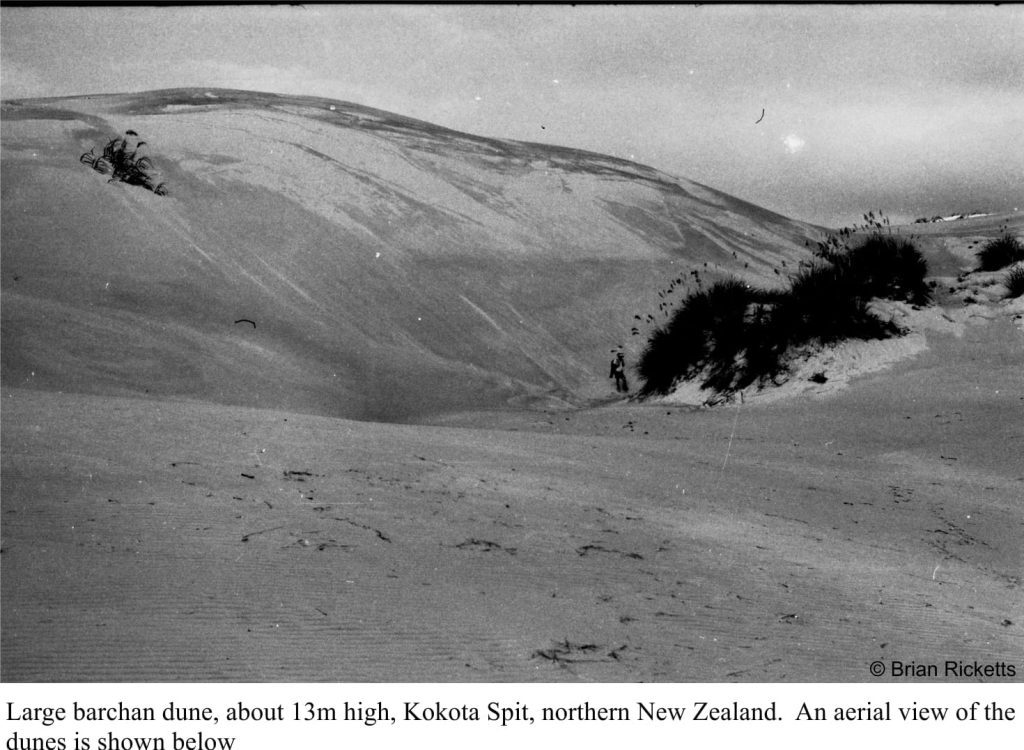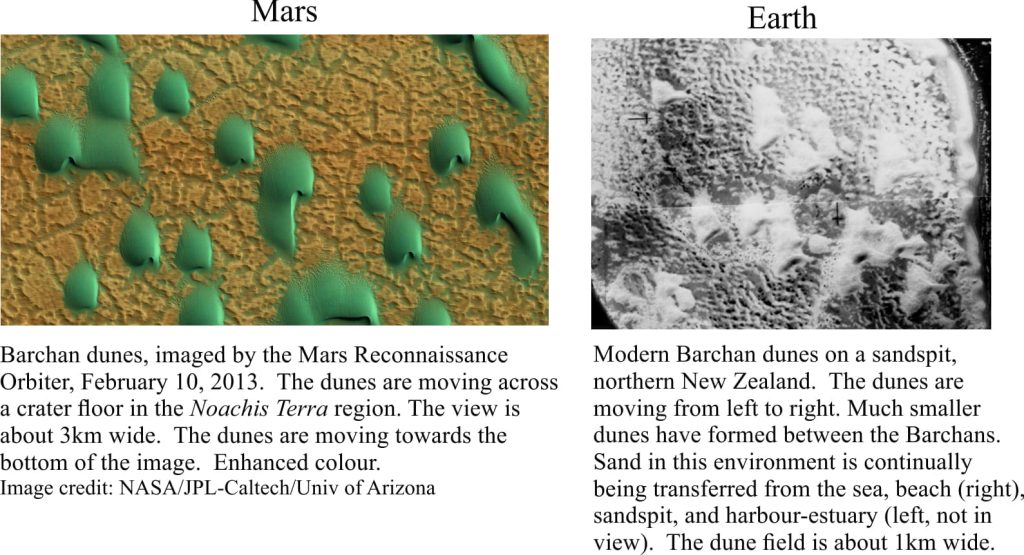When James Hutton in 1785 presented to the Royal Society of Edinburgh his ideas on the uniformity of earth processes (over vast tracts of time), he did so with both feet planted firmly on good Scottish ground. Hutton’s Principle, for which Archibald Geikie later (1905) coined the phrase “The present is the key to the past” gave to geologists a kind of warrant to interpret the geological past using observations and experiments of processes we see in action today (see an earlier post for a bit more discussion on this philosophy). One wonders whether either of these gentlemen gave thought to the Principle being used to interpret processes elsewhere in our solar system.
There is of course, no logical reason why we cannot use terrestrial environments and physical-chemical-biological processes to unravel the geology on our solar neighbours. We may need to extend our thinking beyond purely earth-bound processes, but the Principle remains a starting point for scientific thinking, interpretation, and discovery. Mars provides the perfect opportunity for this scientific adventure.
I am constantly amazed with the images that various satellites and extraterrestrial vehicles provide of our celestial neighbours. The surface of Mars is no exception. There is clear evidence for ancient processes involving water; landforms and landscapes, strata, and minerals, all pointing to a once-watery planet – ancient rivers, lakes, and seas, beset by Noachian floods. But all this aqueous excitement was in the distant past; more than 3.7 billion years past. The Martian surface is now cold and bone dry (although the solid carbon dioxide ice does melt from time to time). Active surface processes on Mars, i.e. those operating now, mainly involve loose sediment (sand, dust), and wind. On earth, our experience tells us that if there is enough wind and enough sand, then sand dunes will form. Martian sand dunes look pretty much like our earth varieties.
The formation of terrestrial ripples and dunes requires certain (well understood) sediment attributes and physical processes. We define sand grains as particles of rock or mineral that range in size from about 0.1mm to 2mm diameter. Most dunes and ripples on earth form in sands that are in the 0.1mm to 0.3mm range.
- The sand needs to be dry.
- Sand grains must be loose, and not stick to one another (in technical jargon they are cohesionless).
- Wind speed must be greater than the threshold for moving the grains. Stronger winds can move larger grains.
Satellite imagery of the Martian surface has revealed that sand dunes and ripples are common. They have formed, and continue to form in crater floors, broad flat plains, and ancient river valleys; basically anywhere there is sufficient loose sand available.
The variety of dune sizes and shapes is similar to that seen on earth. Dune shape, like the Barchan dunes shown in the above images, provides clues to prevailing wind directions. Other dune forms suggest greater variability in wind direction and strength, like the smaller ripple-like structures (below) imaged by Curiosity ; here, changes in wind direction and speed are indicated by the very small ripples that move in different directions across the larger structures. These patterns of sand movement are identical to those we commonly see on earth.
The larger dune imaged by Curiosity (below) is moving directly towards the camera. Sand blown over the top of the dune (the crest) tumbles or slides down the steep front, or lee face, a process that continues as the dune moves forwards. The inset, taken with a special camera that acts like a small magnifying glass (or hand lens), shows the sand grains are indeed loose and cohesionless.
All the above images show dunes and ripples that are currently active. It is also possible to identify fossil dunes in much older strata, using structures within the rocks. In the examples below, the Martian fossil dune structures are very similar to those we see in some familiar rocks at Zion National Park (Utah). The kind of layering visible in both Martian and earth examples is called crossbedding (see here for an explanation of how crossbedding forms).
Despite the obvious similarities between Martian and Terrestrial dunes, one in-depth analysis has led a couple of researchers (Gary Kocurek and Ryan Ewing, see below) to suggest that there are also important differences. The Martian atmosphere is much less dense than that on Earth; there is no oxygen or water vapour. Mars is consistently much colder; permafrost is probably widespread but in this case the ice is solid carbon dioxide. Even if the CO2 melts, it will sublime (to gas) rather than form a liquid. In some cases, permafrost may even stabilise, or solidify dunes.
One important difference between Earth and Mars is in the availability of loose sand. On earth, much sand is produced by weathering of rock, by all the elements of weather plus chemical reactions that commonly involve oxygen. Sand is available along most ocean, lake and river shores. On Mars, physical weathering is very slow; sand is no longer moved by water, as it is on Earth. Chemical weathering on Mars is also extremely slow. Thus, the only sand available will likely be from local permafrost melt, the very slow breakdown of rocks, and the occasional meteorite impact. Some sand may be left over from the period on Mars when water was abundant, the Noachian Period 4.1 to 3.7 billion years ago, but that seems like an awfully long time for sand grains to hang around.
Fossil dunes on Mars, like those on earth, provide clues to the kinds of environments that once existed. Some of these very ancient dunes may even have been associated with Martian lakes and seas. Modern, active dunes on Mars have little or no association with water. But they do provide information on sediment availability, wind direction, and wind strength. The latter may be important when deciding where to locate future sites for human habitation.
NASA, ESA and other organizations have multiple sites to access imagery and general information on all space missions. SEPM (Society for Sedimentary Research) also has a Special Publication (number 102; 2012) with 12 papers that describe aspects of sediments and sedimentary rocks on Mars. The paper by Kocurek and Irwin, cited above, is one of these papers.
Kocurek and Ewing, 2012. Source-to-sink; an Earth/Mars comparison of boundary conditions for eolian dune systems, p. 151-168.






Pingback: click here